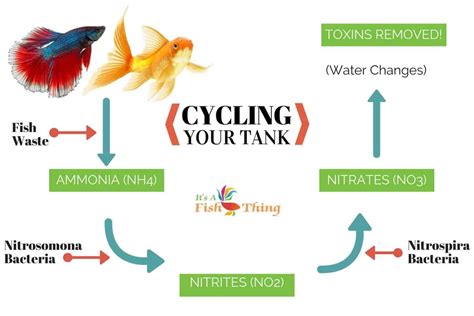How Long Does It Take to Cycle a Betta Tank? A Comprehensive Guide
Cycling a betta tank is crucial for creating a safe and healthy environment for your finned friend. A properly cycled tank converts harmful ammonia and nitrite into less toxic nitrate, ensuring your betta thrives. But how long does this process take? The answer isn't a simple number, but rather a range influenced by several factors. This comprehensive guide will delve into the process, helping you understand the timeframe and best practices.
What is the Nitrogen Cycle?
Before we discuss the timeframe, let's understand the nitrogen cycle itself. This biological process is essential for converting toxic fish waste into less harmful substances. It involves three key bacteria:
- Ammonia-oxidizing bacteria (Nitrosomonas): These bacteria convert ammonia (NH3), a byproduct of fish waste and uneaten food, into nitrite (NO2).
- Nitrite-oxidizing bacteria (Nitrobacter): These bacteria then convert nitrite (NO2), also toxic to fish, into nitrate (NO3).
- Nitrate-reducing bacteria (optional): While not strictly part of the core cycle, these bacteria further convert nitrate into nitrogen gas, which escapes into the air. This step is often assisted by regular water changes.
The cycling process establishes a healthy colony of these beneficial bacteria within your filter media and substrate.
How Long Does it Take to Cycle a Betta Tank?
The typical cycling time for a betta tank ranges from 4-8 weeks, but it can sometimes take longer. Several factors influence this timeframe:
- Type of Filter: A more powerful filter with a larger surface area for bacteria colonization will generally cycle faster. Hang-on-back (HOB) filters are commonly used and effective.
- Initial Bacteria Source: Adding a filter media from an established aquarium ("seed media") significantly speeds up the process. Using commercially available bottled bacteria cultures can also help.
- Water Temperature: Warmer water generally fosters faster bacterial growth, but avoid excessively high temperatures.
- Tank Size: Larger tanks may take slightly longer to cycle due to the larger volume of water that needs to be colonized.
- Stocking Density: Cycling an empty tank (fishless cycling) is usually faster than cycling with a fish, as ammonia levels need to be carefully monitored and controlled.
How to Speed Up the Cycling Process
Several techniques can help you accelerate the cycling process:
- Use Seed Media: The fastest way is to acquire filter media from a well-established aquarium. Ask a local fish store or experienced aquarist for a small amount.
- Use Commercial Bacteria Products: Many brands offer bottled bacteria cultures that introduce beneficial bacteria into the tank.
- Fishless Cycling: This involves adding an ammonia source (e.g., pure ammonia or fish food) to the tank and monitoring ammonia, nitrite, and nitrate levels until they cycle.
How to Monitor the Cycling Process
Regular testing is crucial. Use a liquid test kit (strips aren't as accurate) to monitor:
- Ammonia (NH3): Should be 0 ppm.
- Nitrite (NO2): Should be 0 ppm.
- Nitrate (NO3): Should be below 20 ppm (ideally under 10 ppm).
Once all three parameters read 0 ppm (Ammonia and Nitrite) and the nitrate is rising to a safe level, the tank is cycled.
What Happens If My Betta Tank Takes Longer Than Expected?
Don't panic if your tank takes longer than expected. Patience is key. Continue monitoring water parameters regularly and make sure your filter is functioning correctly. If ammonia or nitrite levels remain high for an extended period, investigate potential issues such as filter malfunction or insufficient aeration.
Can I Add My Betta Before the Tank is Fully Cycled?
No. Adding a betta to an uncycled tank will almost certainly lead to ammonia poisoning, which can be fatal. Wait until your tank is fully cycled before introducing your new pet.
H2: What are the signs of an uncycled tank?
An uncycled tank will typically exhibit high levels of ammonia and nitrite, as indicated by regular water testing. Your betta may show signs of stress such as lethargy, loss of appetite, clamped fins, and rapid gill movements.
H2: How often should I perform water changes during the cycling process?
During the cycling process, it's generally recommended to perform water changes only if the ammonia levels reach dangerously high levels (above 4ppm). This is because water changes will remove some of the beneficial bacteria that are establishing themselves. Once the cycle is complete, however, regular partial water changes are crucial for maintaining a healthy tank environment.
H2: Can I cycle a betta tank without a filter?
While technically possible, cycling a tank without a filter is extremely difficult and not recommended. A filter plays a vital role in the nitrogen cycle by providing a surface for bacteria colonization.
By carefully following these guidelines and understanding the nitrogen cycle, you can successfully cycle your betta tank and create a healthy and thriving environment for your aquatic companion. Remember, patience and consistent monitoring are essential for success!

